1,577 days, 2,409 entries ...
Newsticker, link list, time machine: HOLO.mg/stream logs emerging trajectories in art, science, technology, and culture––every day
“Neither side in the debate on ‘killer robots’ has addressed the most potentially unnerving aspect of using them in battle: sooner or later, they’ll be able to communicate with each other without human intervention.”
“Cohen developed AARON with intention. The machine and the painter grew together—inefficiently, by tech’s standards, but fruitfully, by art’s.”
Freshly acquired by the National Gallery of Australia (NGA), American artist Jordon Wolfson’s Body Sculpture (2023) debuts in its permanent Canberra home. An unsettling performance in which an industrial robotic arm wields a chain tethered to a metallic box with animatronic arms, the robot pair executes a choreography of power and control. In the foreground, the torso-box affectively gestures with humanlike precision; in the background, the industrial arm plays puppeteer and pulls the strings.
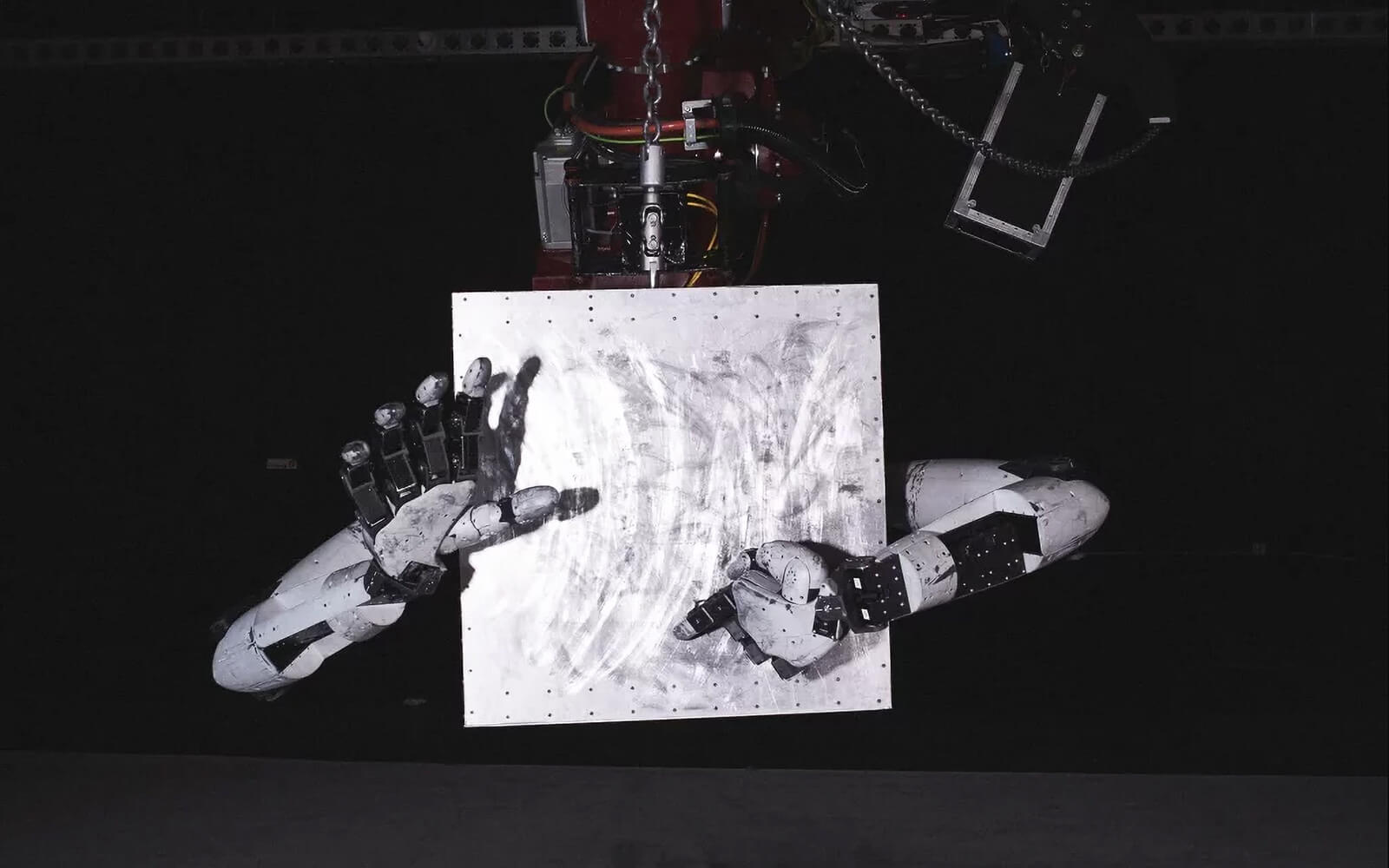
“For me, drawing is a way of being in the world. When I draw and create with my machines, this creative process allows me to engage with the technology alongside my physical instincts to form a kind of gestural relation.”
The NGV Triennial opens at Melbourne’s NGV (National Gallery of Victoria) International, showcasing 100 works from 120 artists and designers that epitomize contemporary practice. In addition to timeless pieces by Hito Steyerl, John Gerrard, SMACK, and Julian Charrière, NGV premieres several new commissions: Dunne & Raby’s Designs for a World of Many Worlds: After the Festival (2023) imagines future multi-species gatherings through speculative artifacts, while Agnieszka Pilat’s Heterobota (2023, image) enjoy playtime.
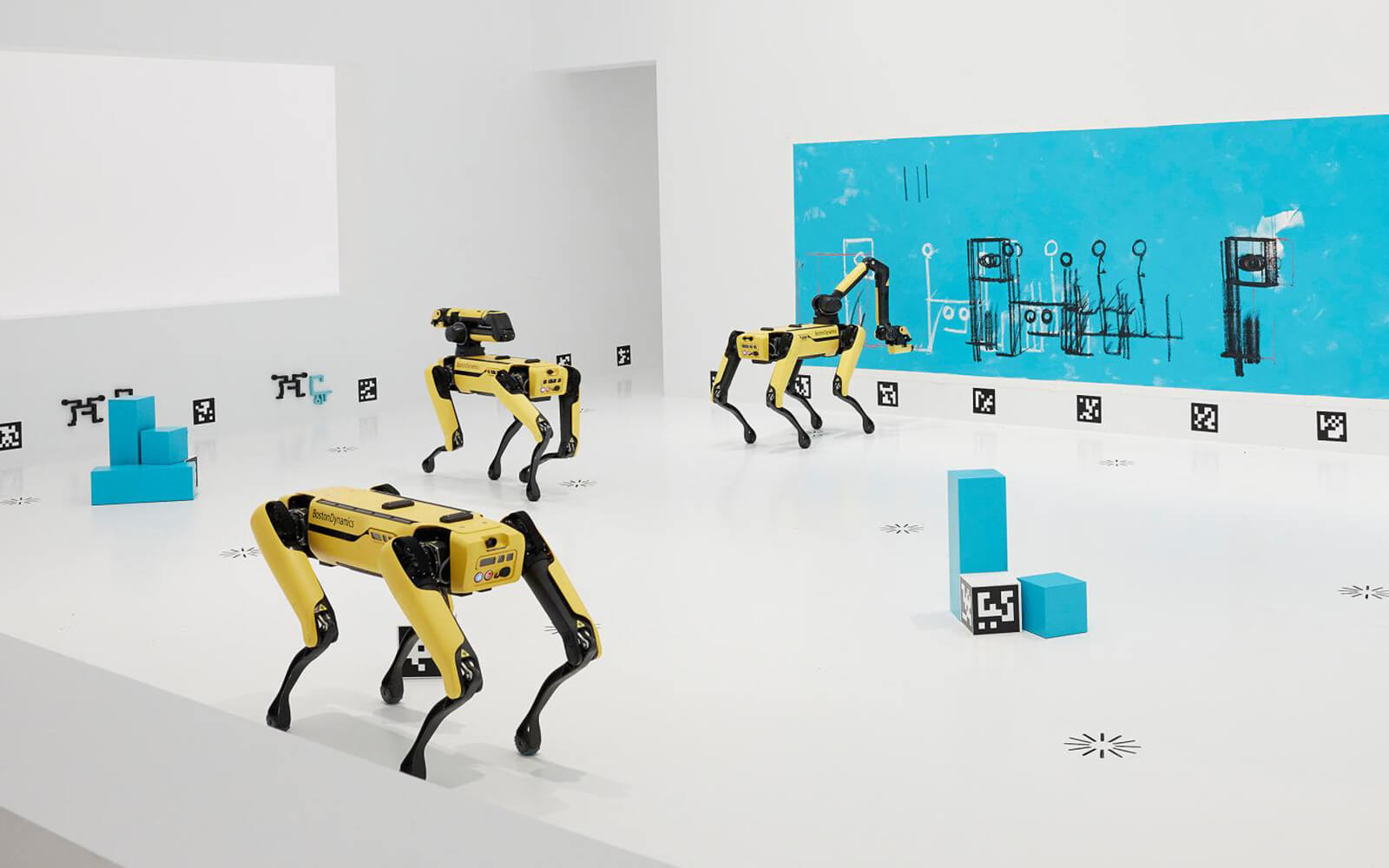
“Sometimes I feel like Jane Goodall observing nature in the wild—and then I can just put on my engineering hat and go tinker around with their brains.”
“Art doesn’t play fetch with approval. It chews the slippers of convention and relishes in the surprise of its own bark.”
Considering compassion and competence, “AI: Who’s Looking After Me?” opens at Science Gallery London. Co-presented with FutureEverything, invited artists including James Bridle, Wesley Goatley, Seo Hye Lee, and Mimi Ọnụọha interrogate “what it means to entrust our care to autonomous machines. ” Blast Theory’s Cat Royale (2023, image), for example, puts Ghostbuster, Pumpkin, and Clover in the custody of a computer vision system and robot arm, which monitor, tend to, and play with the three felines.
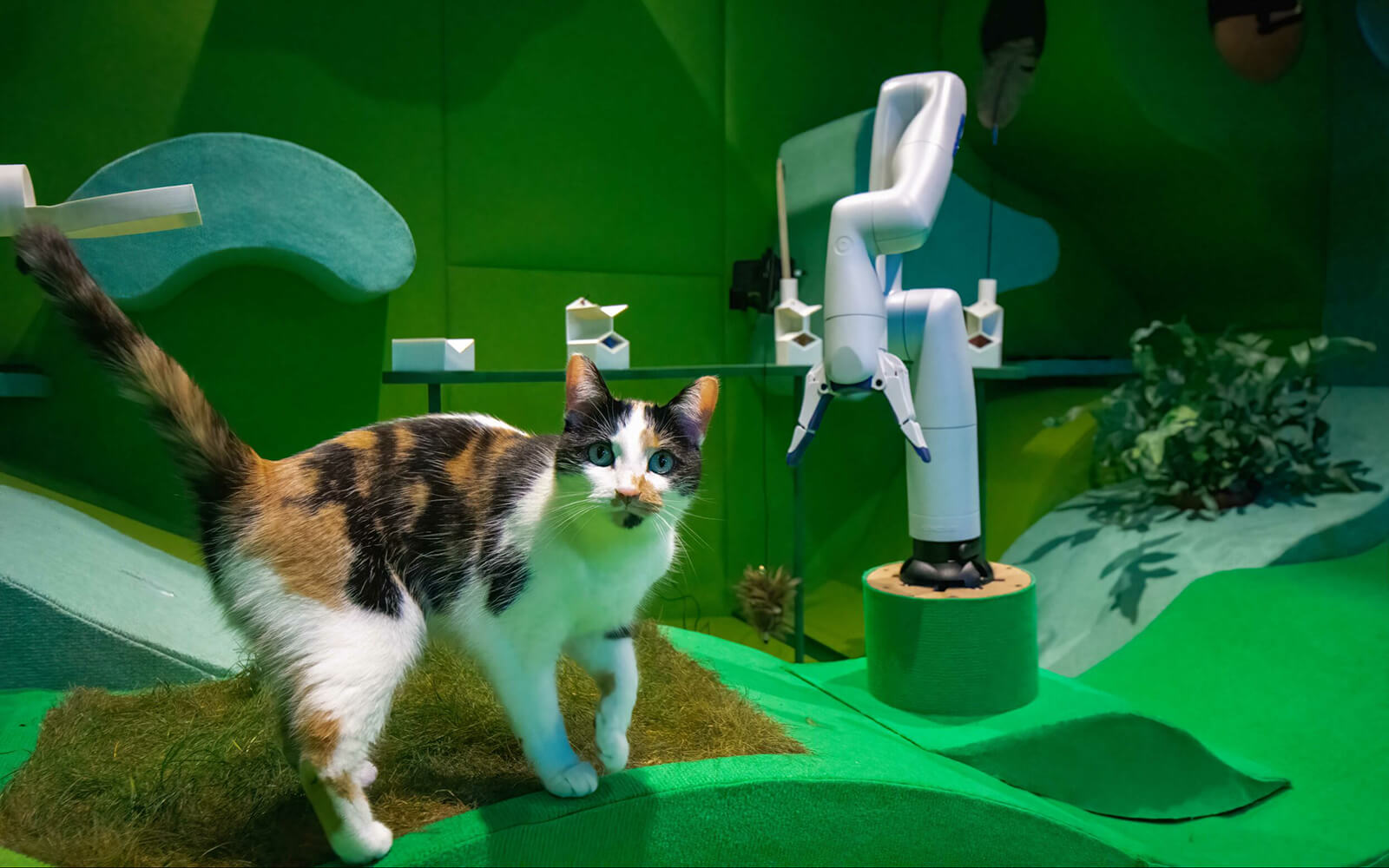
German AI artist Mario Klingemann releases A.I.C.C.A., short for Artificially Intelligent Critical Canine (2023), into the current exhibition of Madrid’s Colección SOLO. Equipped with a camera, thermal printer, and ChatGPT, the furry AI art critic on wheels is designed to roam galleries and offer analysis—from its butt. The performative sculpture pokes fun at punditry but isn’t cynical, Klingemann assures. “Art critics play a very important role. The worst thing that can happen to an artist is to be ignored.”
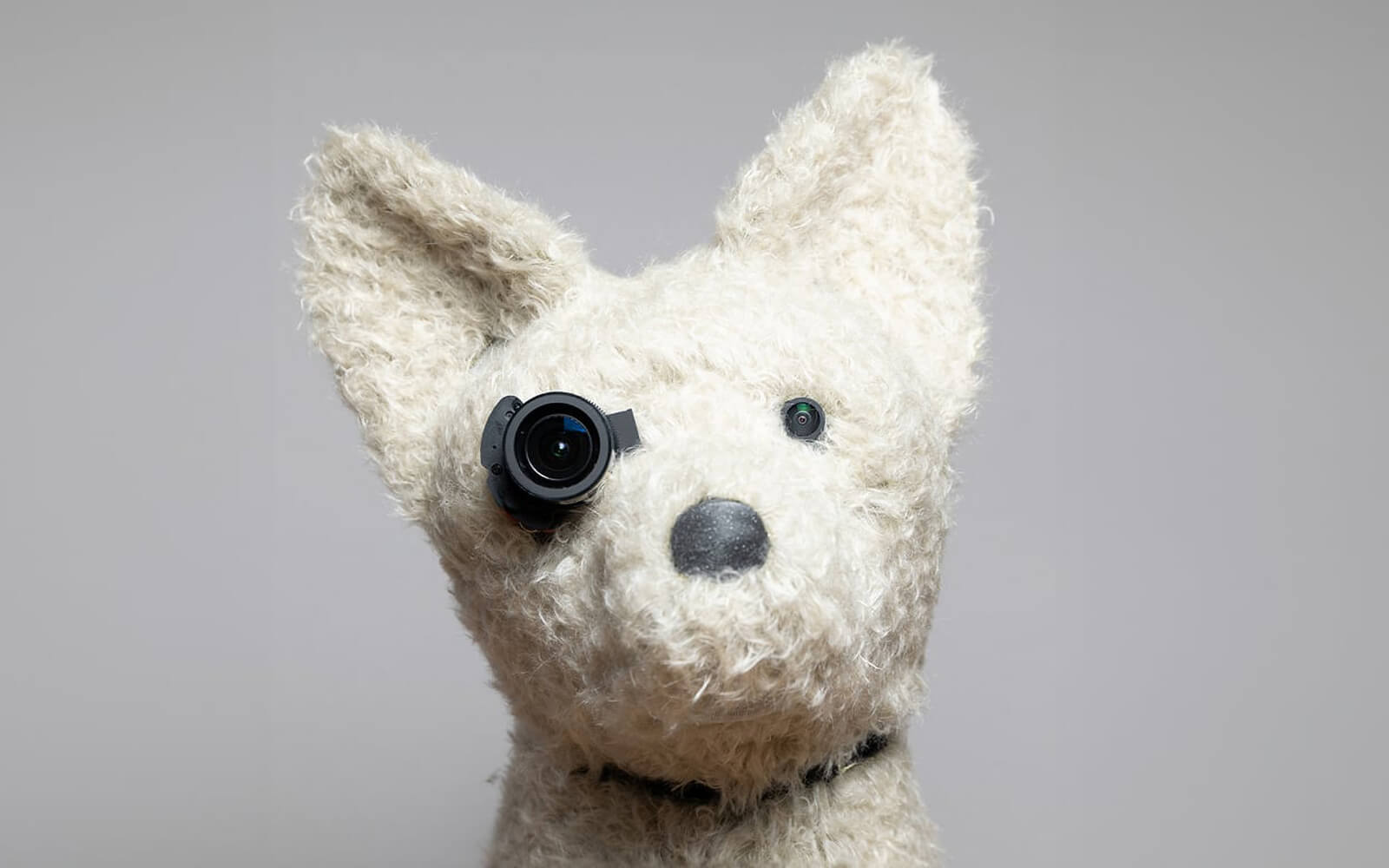
“A future that de-centres the human in artistic practice to make room for other-than-human, living, and nonliving configurations also ignites the field of art itself—re-framing the artist as an engineer, designer, and system architect.”
“Semi-autonomous weapons, like loitering munitions that track and detonate themselves on targets, require a ‘human in the loop.’ They can recommend actions but require their operators to initiate them.”
“The Technate,” an exhibition by Peter Behrbohm and Markus Bühler that “follows the wires” of North American internet infrastructure, opens at Berlin’s panke.gallery. The show centres their eponymous research project (2023, image), a reenactment of a 1947 road trip (from California to British Columbia) promoting the technocracy movement. In it, the duo cosplay as technicians (with a robot dog), and visit technoculture hotspots including Internet Archive and Noisebridge.
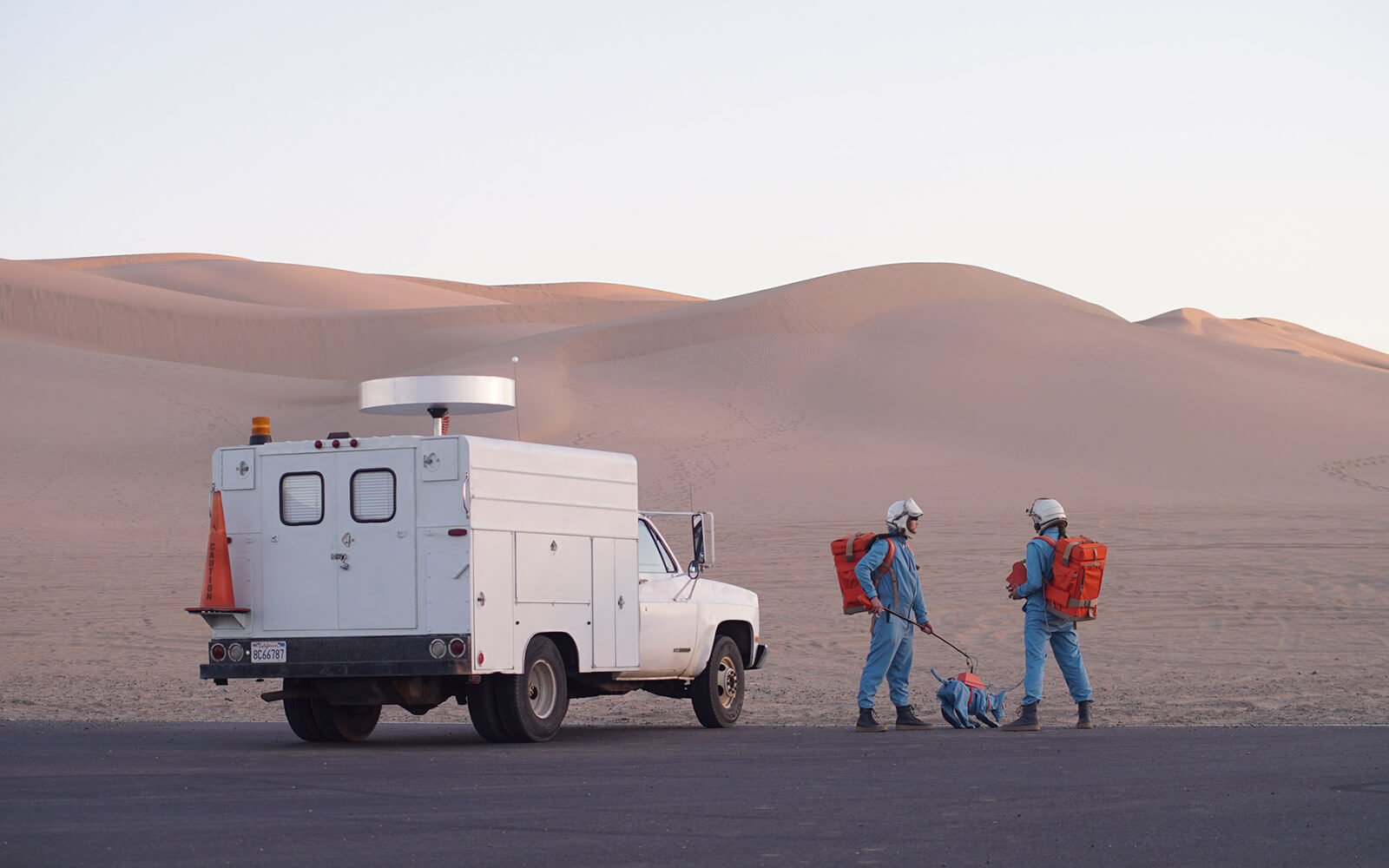
“You can see that there’s a genealogy here that results in a TikTok-dancing murder robot named M3GAN. This is fundamentally some old, old stuff.”
London’s V&A Museum announces the acquisition of Sougwen Chung’s 2017 drawing MEMORY (D.O.U.G. 2) for its permanent collection. Part of the Chinese-Canadian artist’s body of painterly robot collaborations, the acquisition includes the RNN (Recurrent Neural Network) model that Chung trained on years of her own drawings to co-create the piece. It’s the first artifact of its kind to be acquired by a cultural institution, the V&A notes.
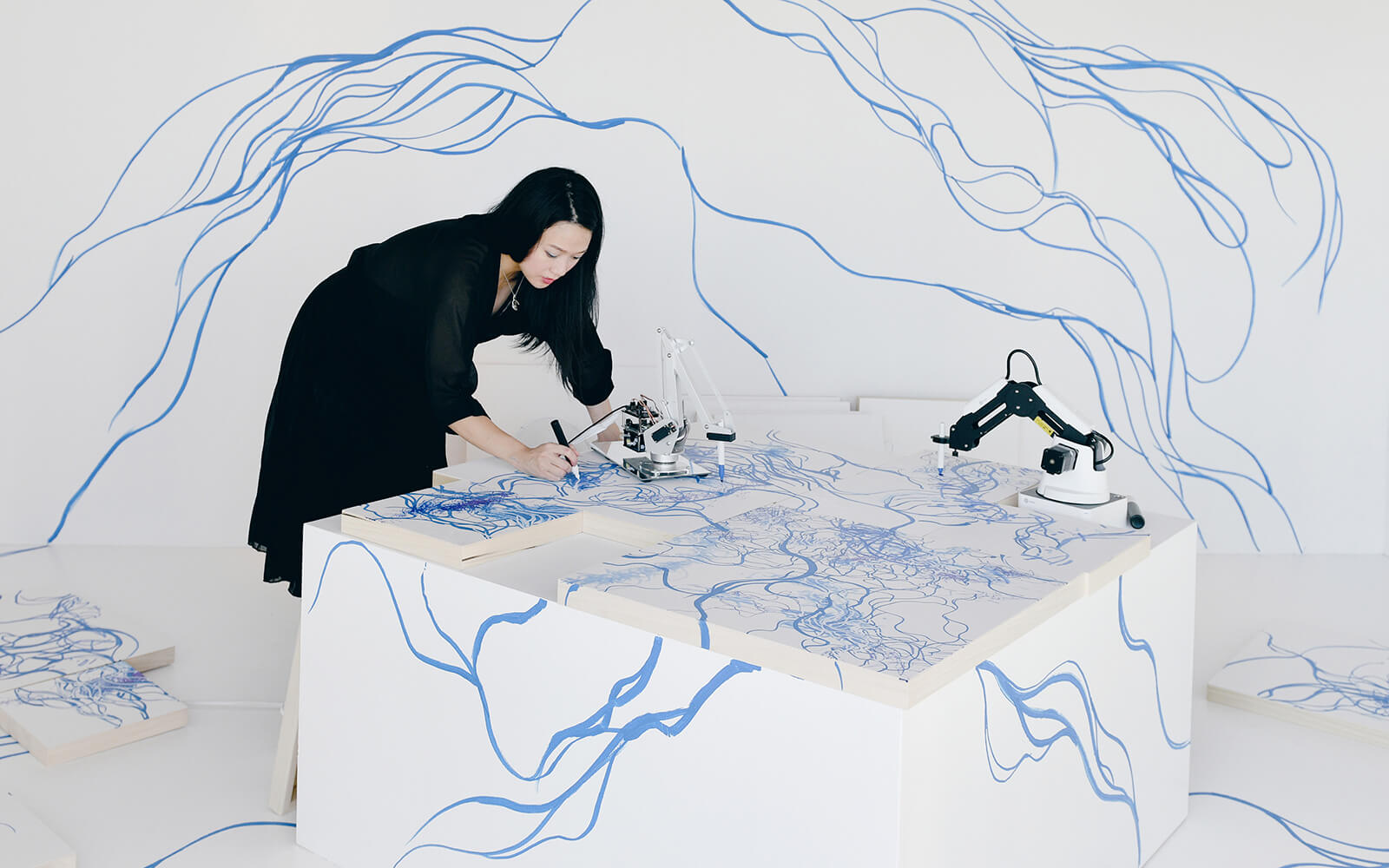
Swiss artist and designer Jürg Lehni celebrates the 20th anniversary of his seminal robotic drawing machine, Hektor (2002), in a commemorative Twitter thread. “Imperfect and full of character,” the hanging computer-controlled spray-paint plotter drew at transmediale, Design Museum London, and the MoMA, and remains a DIY marvel for its time: “edged circuit boards, assembly-programmed microcontrollers—we did everything by hand,” Lehni notes about making in the pre-fab era.
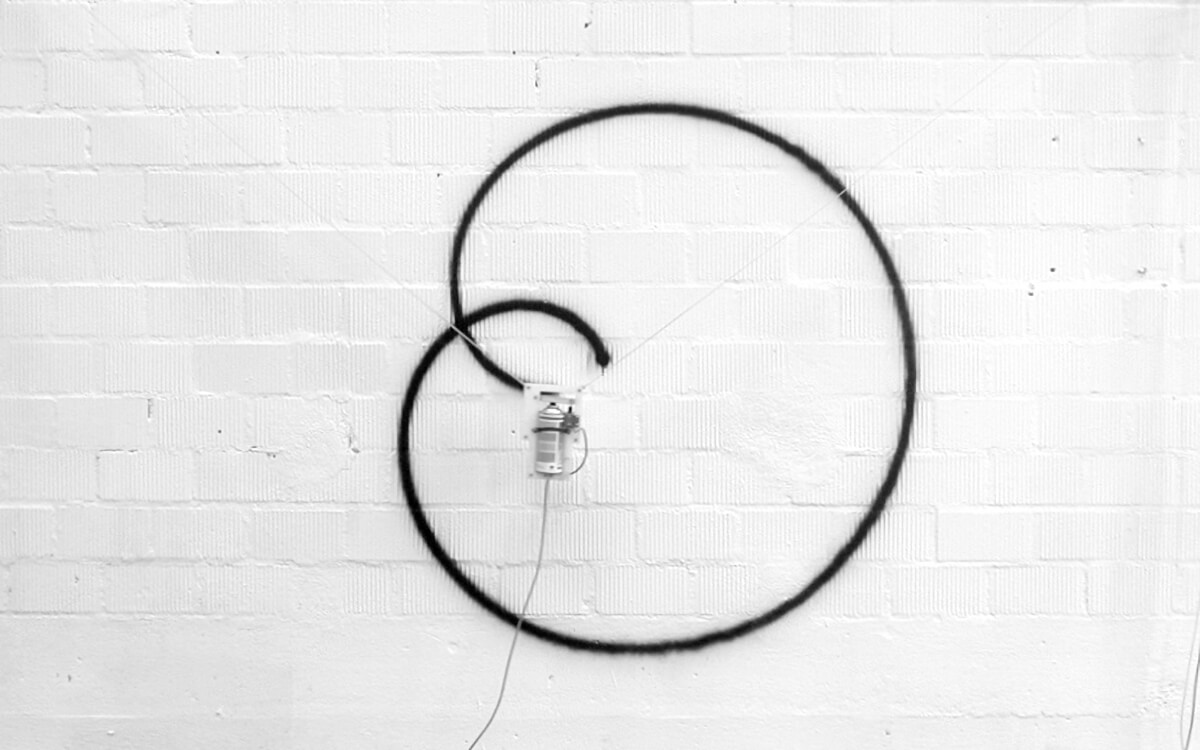
The first-ever solo exhibition of Brooklyn-based art collective MSCHF opens at Perrotin, New York, presenting elaborate interventions that leverage the absurdity of late-stage capitalism. Transforming the gallery into an interactive strip mall, “No More Tears, I’m Lovin’ It” showcases the group’s art as merchandize. Spot’s Revenge (2022, image), for example, trolls Boston Dynamics with a heavily armed robot dog, after the manufacturer disabled the legally purchased unit remotely.
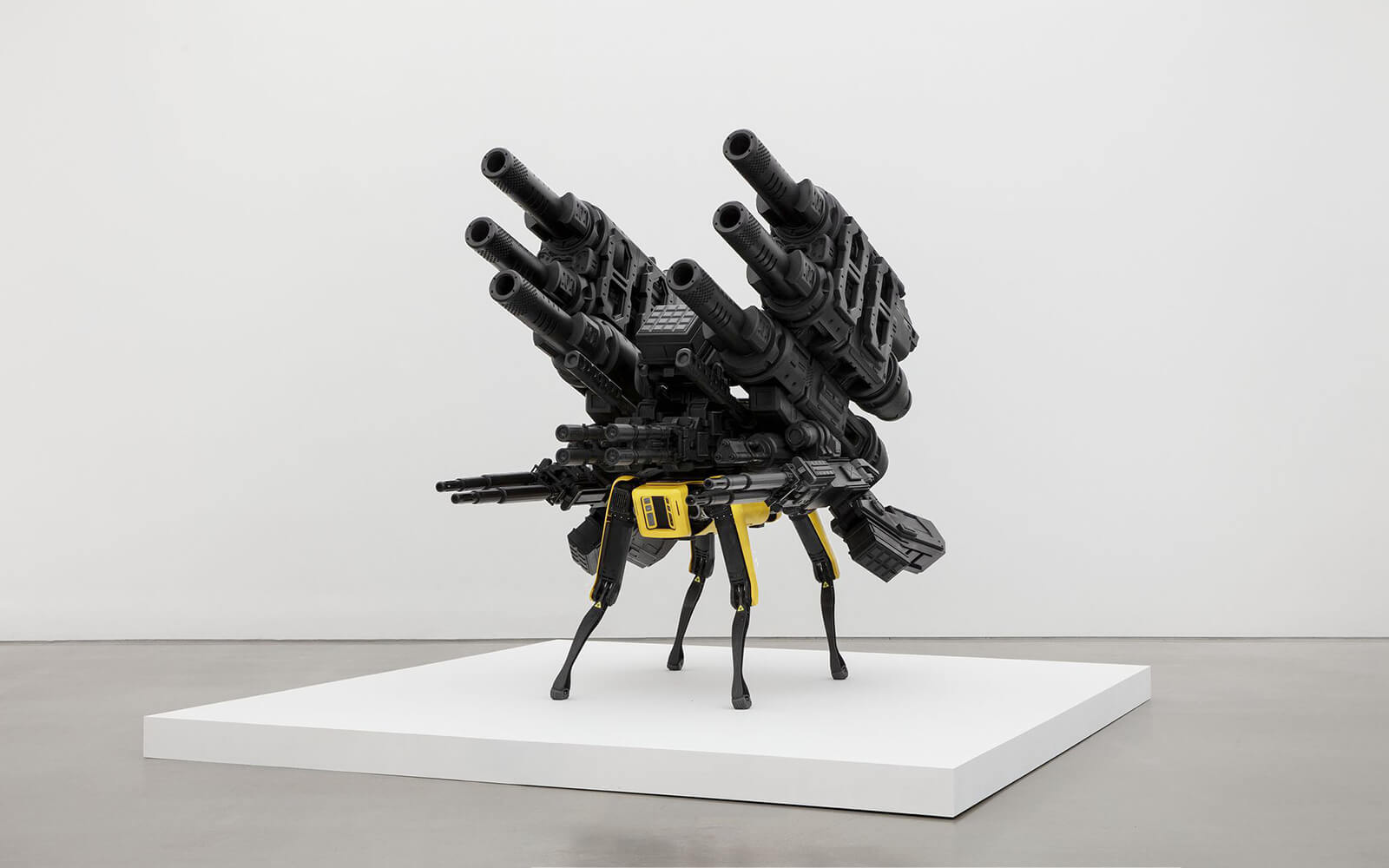
“Cyborg cockroaches that find earthquake survivors. A ‘robofly’ that sniffs out gas leaks. Flying lightning bugs that pollinate farms in space. These aren’t just buzzy ideas, they’re becoming reality.”
“A human operator tags the ends of the intestine with drops of fluorescent glue, creating markers the robot can track.”
“Basha’s paintings are dominated by circles, which she creates with her feet, while her lines are created by a painting arm.”
Daily discoveries at the nexus of art, science, technology, and culture: Get full access by becoming a HOLO Reader!
- Perspective: research, long-form analysis, and critical commentary
- Encounters: in-depth artist profiles and studio visits of pioneers and key innovators
- Stream: a timeline and news archive with 1,200+ entries and counting
- Edition: HOLO’s annual collector’s edition that captures the calendar year in print
